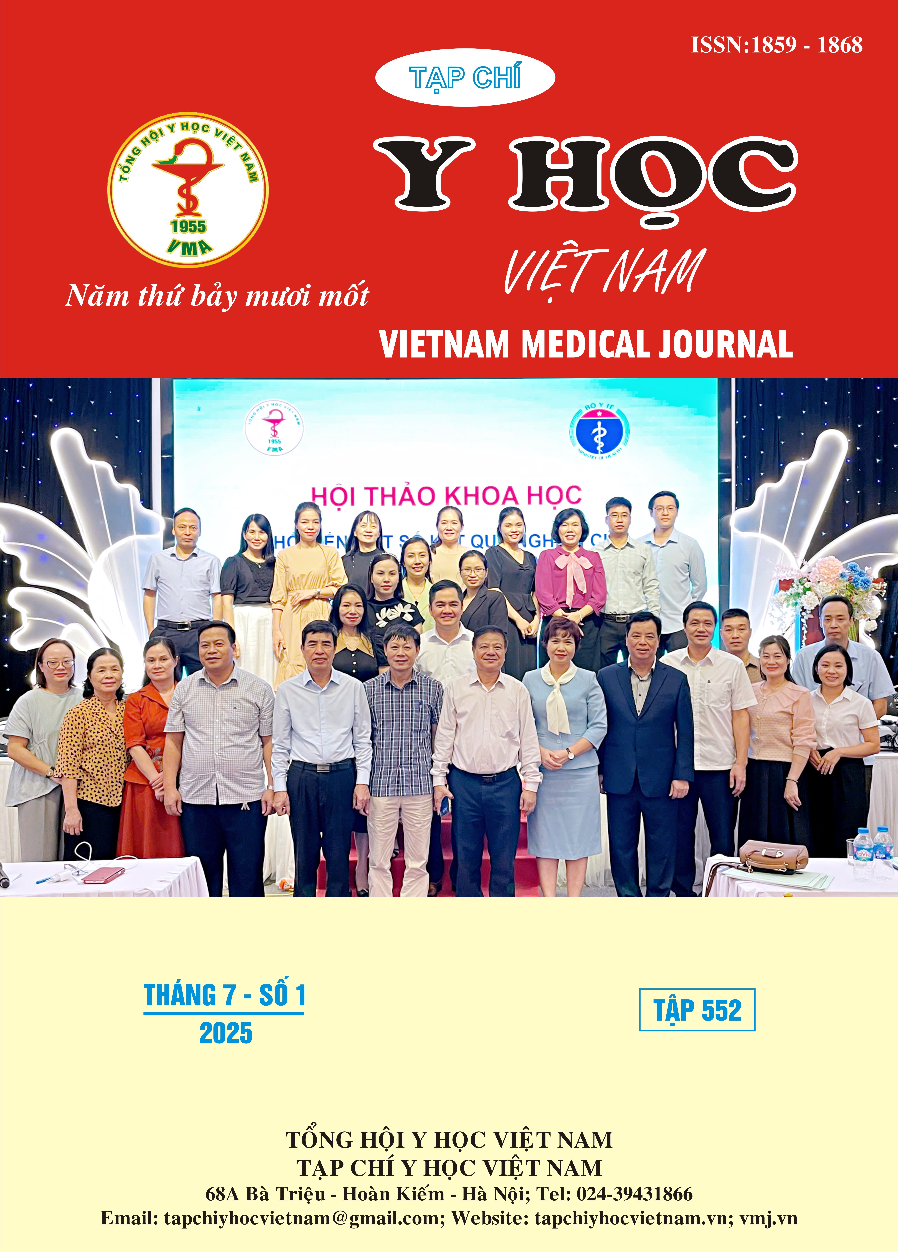KẾT QUẢ ĐIỀU TRỊ GÃY XƯƠNG CHÀY BẰNG PHƯƠNG PHÁP ĐÓNG ĐINH NỘI TỦY KÍN CÓ CHỐT ĐIỀU TRỊ GÃY KÍN THÂN XƯƠNG DÀI TẠI KHOA NGOẠI DÃ CHIẾN BỆNH VIỆN QUÂN Y 103
Nội dung chính của bài viết
Tóm tắt
Đặt vấn đề: Phương pháp đóng đinh nội tuỷ kín có chốt điều trị gãy kín thân xương dài là một tiến bộ lớn trong lĩnh vực chấn thương chỉnh. Tại Bệnh viện quân y 103, đã áp dụng điều trị các trường hợp gãy kín thân xương chày bằng đóng đinh nội tuỷ Sanatmetal. Mục tiêu: Đánh giá kết quả điều trị gãy xương chày bằng đinh Sanatmetal tại khoa ngoại dã chiến Bênh viện quân y 103. Phương pháp nghiên cứu: 42 bệnh nhân (BN) được điều trị tại khoa ngoại dã chiến Bệnh viện 103, 01/2018 - 12/2018 bằng đóng đinh nội tuỷ Sanatmetal kín, có chốt. Kết quả: Bệnh nhân tuổi thấp nhất là 16, cao nhất là 85, trung bình 32,23. Tuổi 16 - 40 chiếm tỷ lệ cao nhất (76,19 %). Số BN gãy chéo vát dài (Al), gãy có mảnh rời (Bí, B2, B3) và gãy phức tạp (Cl, C2, C3) là 30 BN. 42 BN (100%) liền vết mổ kỳ đầu và được dẫn lưu ở vết mổ đầu trên xương chày. Có 39 BN (92,86%) đã được nắn hết di lệch ở mọi hình thái gãy. 3 BN (7,14%) còn di lệch ít. Kết luận: Đóng đinh nội tủy kín, có chốt là phương pháp cho kết quả liền xương tốt, áp dụng cho mọi hình thái và vị trí gãy thân xương chày.
Chi tiết bài viết
Từ khóa
Đóng đinh nội tuỷ kín, phẫu thuật, xương dài
Tài liệu tham khảo
2. Nguyễn Văn Dương, Nguyễn Tiến Bình và Vũ Nhất Định (2009), "Nhận xét kết quả điều trị gãy hở hai xương cẳng chân bằng cọc ép ren ngược chiều tại bệnh viện Tiền Giang từ 1 - 2006 đến tháng 12 - 2008", Y học thực hành. số 1 - 2009, tr. 1 - 6.
3. Trịnh Xuân Đàn, Đinh Thị Hương và Nguyễn Huỳnh (2008), "Giải phẫu chi dưới", Bài giảng giải phẫu học, Nhà xuất bản Y học, tr. 99 - 175.
4. Nguyễn Hạnh Quang (2007), Nghiên cứu phương pháp đóng đinh nội tủy kín có chốt ngang bằng đinh kuntscher cải biên dưới màn tăng sáng điều trị gãy kín thân xương chày, Luận án tiến sĩ y học, Học Viện Quân Y.
5. Trương Xuân Quang (2004), Đánh giá kết quả điều trị gãy hai xương cẳng chân bằng phương pháp đóng đinh SIGN kín có chốt ngang, Luận văn thạc sĩ y học, Đại học Y Hà Nội.
6. Bhandari, Mohit (2012), "Economic evaluation of reamed versus unreamed intramedullary nailing in patients with closed and open tibial fractures: Results from the study to prospectively evaluate reamed intramedullary nails in patients with tibial fractures (sprint)", Journal of Bone & Joint Surgery, British Volume. 94(Supp xxxviii), pp. 76-76.
7. Young S., Lie S. A., Hallan G., Zirkle L.G. (2011), "Low infection rates after 34,361 intramedullary nail operations in 55 low and middle income countries: Validation of the Surgical Implant Generation Network (SIGN) online surgical database", Acta orthopaedica. 82(6), pp. 737 - 743.
8. Yaligod V., Rudrappa G.H., Nagendra S., (2014), "Minimizing the complications of intramedullary nailing for distal third tibial shaft and metaphyseal fractures", Journal of Orthopaedics. 11(1), pp. 10 - 18.
9. Yu J., Li L., Wang T., Sheng L. (2015), "Intramedullary nail versus plate treatments for distal tibial fractures: A meta - analysis", International Journal of Surgery.16, Part A, pp.60–68.


